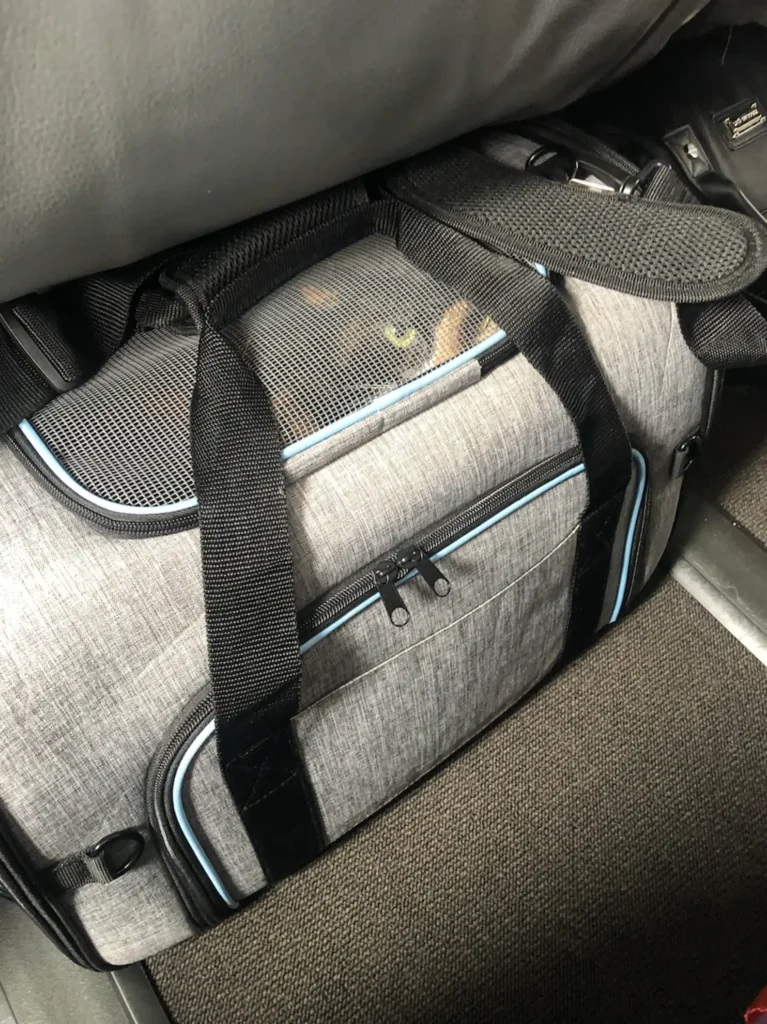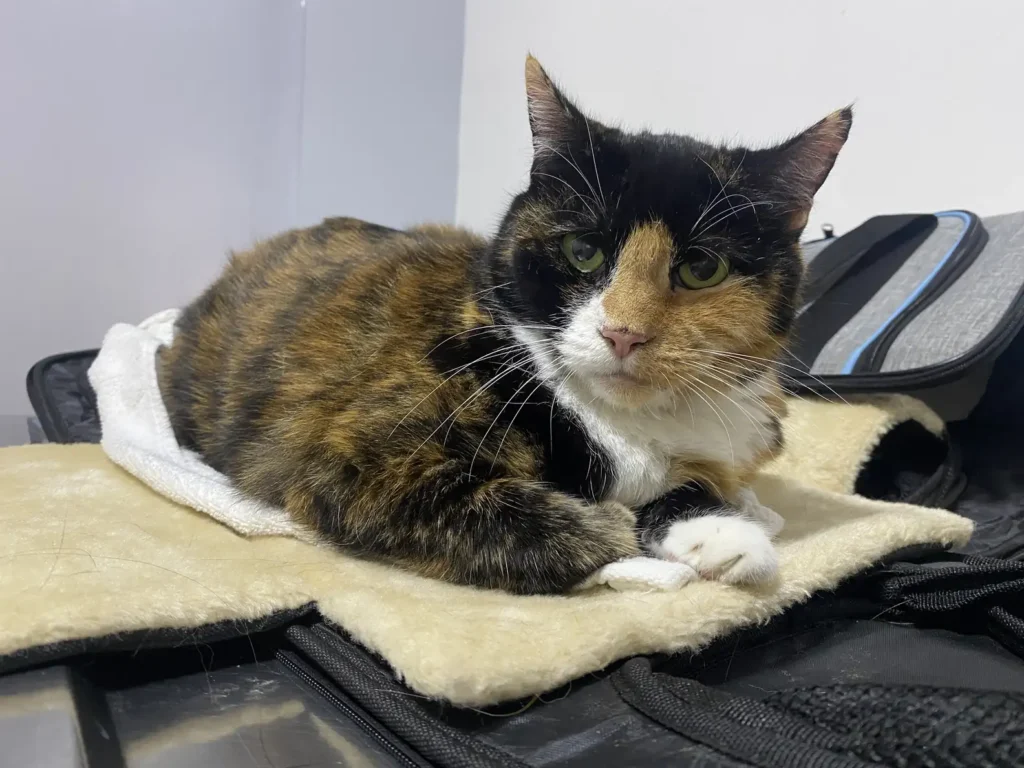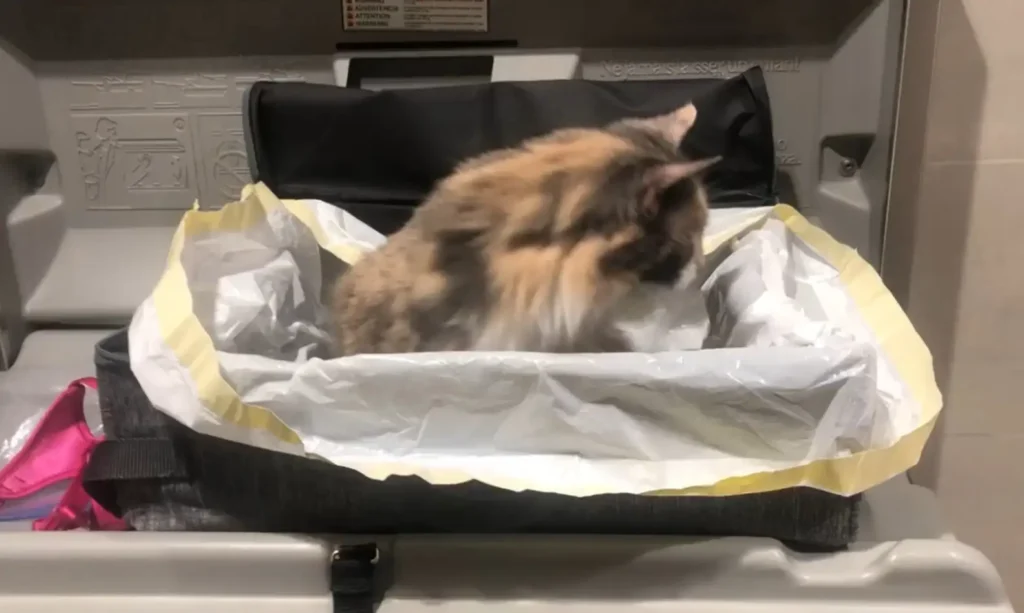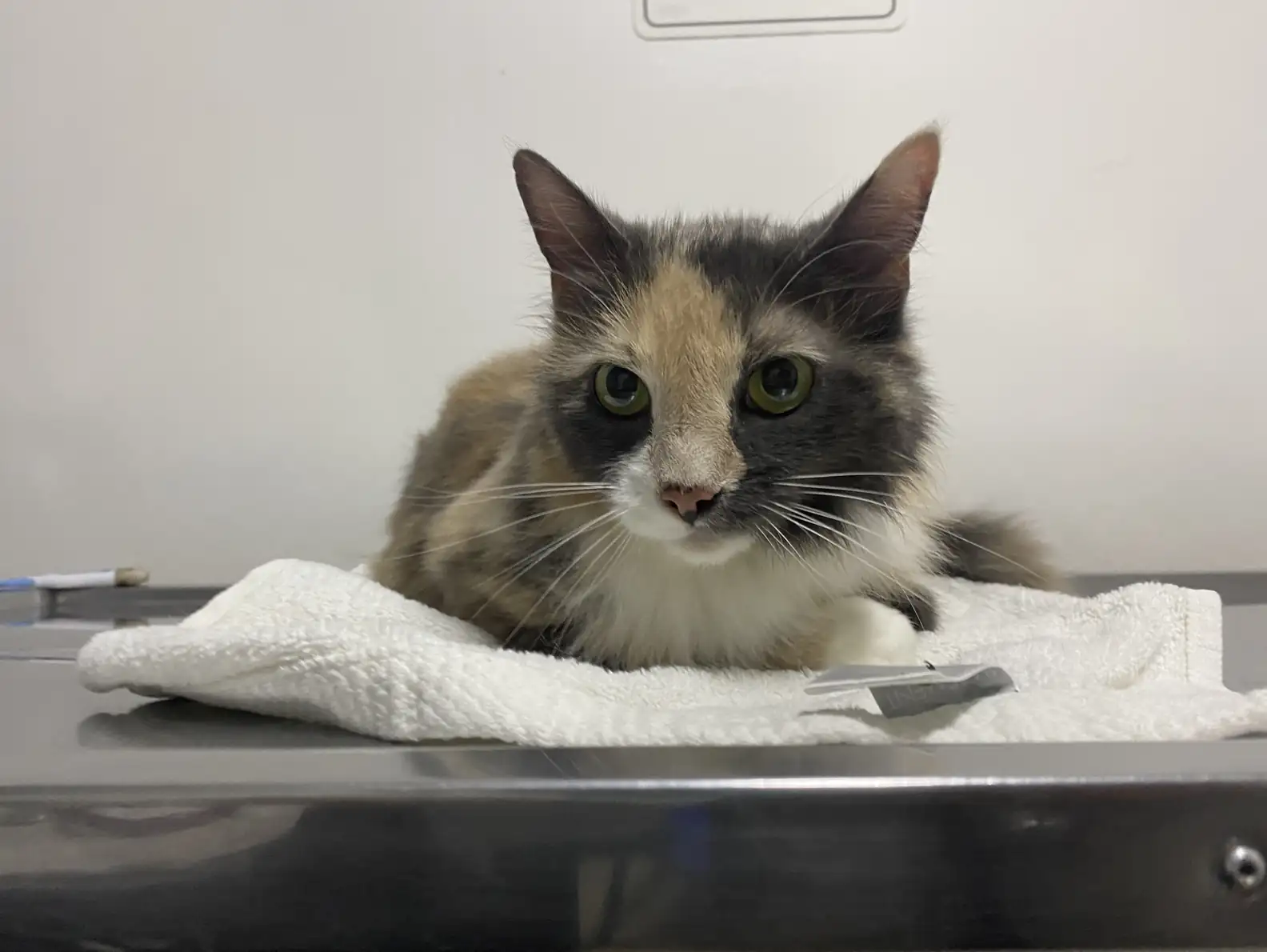I’m so glad I chose to bring them with me ❤️
Have you ever found yourself on vacation, savoring a sunset and wishing your cat could be there to enjoy it with you? Or perhaps you’ve had the chance to relocate to a new country but can’t bear the thought of leaving your cherished feline behind. Is it possible to bring them along?
Traveling with a cat might seem daunting, with various methods of travel each posing its own set of challenges, but it’s definitely feasible. Here are some tips to help ensure a smooth and stress-free journey for both you and your beloved homebody.
Talk To Your Vet
Before embarking on your trip, whether by car or plane, consult with your veterinarian. It’s crucial that your cat is medically cleared for travel and current on vaccinations. If you’re worried about your cat’s anxiety during the journey, discuss the possibility of prescription medications with your vet.
“Many pets benefit from medication while flying, but it’s important to discuss any calming products with your family veterinarian before administering them,” advised Dr. Zach Marteney, veterinarian and medical director at Meadowlands Veterinary Hospital, in an interview with The Dodo. “They can help you choose a safe and effective solution for managing travel anxiety.”
If your cat is prescribed medication for the trip, consider doing a trial run a few days before departure, while you’re still at home and able to monitor your cat’s reaction.
For international travel, a USDA-accredited veterinarian will assist in understanding your destination’s requirements and completing all necessary paperwork.
“For international flights, pets must meet stringent entry requirements,” Dr. Marteney noted. “Different countries have varying regulations, often necessitating a special health certificate signed by a USDA-accredited veterinarian and endorsed by an official USDA veterinarian.”

Choose The Right Equipment
After consulting with your veterinarian, it’s time to gather the essentials to ensure your cat’s safety and comfort during their journey. What you need will vary depending on whether you’re traveling by car or plane.
For road trips, opt for a tall, spacious pet carrier with seat belt attachments, such as the Portable Double Cat Carrier. If possible, bring along your cat’s favorite items—like blankets and toys—to help soothe them.
“When you get to the car, make the ride as comfortable as possible by using familiar bedding, offering small amounts of treats (enough to avoid carsickness), and including toys,” advised Dr. Lenox, a veterinarian and regulatory veterinary manager at Royal Canin, in an interview with The Dodo.
When flying, you’ll face more restrictions regarding what you can bring for your cat. You’ll need a soft-sided carrier that adheres to airline size regulations, typically one small enough to fit under the seat in front of you. Some carriers, like the Four Way Expandable Pet Carrier, provide additional space for your cat to stretch out if necessary.
In addition to the carrier, ensure you pack:
- A portable travel litter box
- A small zip-lock bag of cat litter
- A plastic garbage bag to line the litter box
- Pet grooming wipes for any accidents
- Biodegradable poop bags
- Potty pads to line the carrier
- An escape-proof harness
- Collapsible food and water bowls

Familiarize Your Cat With Their Travel Equipment Before You Go
If your cat is new to traveling in a carrier, or if you’re using a new one to meet size regulations, it’s essential to acclimate your cat well before your travel date.
“Take the carrier out of storage and keep it in a visible area for several days leading up to your trip,” Dr. Marteney advised. “This helps your cat get used to it and reduces stress when it’s time to use it.”
Dr. Marteney also suggests practicing in the car before embarking on a long journey or flight.
“If you’ve never flown with your cat, I recommend doing a ‘dry run’ first,” Dr. Marteney said. “Place your cat in the carrier and go for a short drive to gauge how well they tolerate it.”
For air travel, you’ll need to quickly remove your cat from the carrier and carry them through the metal detector while the carrier goes through the X-ray machine. It’s beneficial to practice taking your cat out and holding them close at home beforehand, where the environment is calmer and less rushed.

Feed Your Cat Well Before Leaving
Traveling with a cat can present challenges when it comes to food and water. To help prevent motion sickness, it’s best to withhold food for a few hours before the trip and ensure your cat has access to water. While you can bring dry food for the journey, your cat might not feel like eating if they’re stressed.
Feeding schedules before a trip can vary depending on your cat’s needs and your travel plans. For example, when I flew internationally with my two cats, Pumpkin and Mia, their feeding routines were different.
Since Pumpkin was prone to motion sickness and had a direct flight, I removed her food four to six hours before heading to the airport and fed her again once we arrived. Mia, who is less sensitive to motion sickness and had a long layover, had her food available until we departed, and I packed some dry food in my carry-on to offer her during the layover.

Give Your Cat Opportunities to Stretch Out And Relieve Themself
Cats can be quite sensitive to stress, often eating less and avoiding their usual routines when things are chaotic. However, during long travel days, it’s crucial to provide opportunities for them to go potty and stretch their legs whenever possible.
For Mia, I set up her travel litter box in various locations: the airport’s pet relief room, changing tables in family restrooms, and even a shelf in the airplane bathroom. Though she was too anxious to use it until we were home, I felt reassured knowing she had the option to feel litter under her paws if needed.
Pumpkin had a different experience. She relished the extra space in her carrier during the flight. I expanded the sides of her carrier once the plane reached cruising altitude, allowing her to stretch out and curl up in her favorite shrimp position for most of the journey.
Enjoy The Destination
After enduring a long day of travel with your cat, the final step is to settle into your new environment and begin exploring with your beloved companion. While traveling with a cat can be stressful, the joy of arriving at your destination together makes it all worthwhile.
Despite the stress of their journey, both Pumpkin and Mia adapted quickly to their new home. With a few extra cuddles and some tasty snacks, they quickly resumed their usual selves and seemed remarkably unfazed by the experience. I’m thrilled that I chose to bring them along.
